Mutt star Lío Mehiel on trans vulnerability and the activism of art
Exclusive: "Ultimately, we wanted people to walk away from the movie and feel they had a new trans friend they understood on a human level," says Mehiel
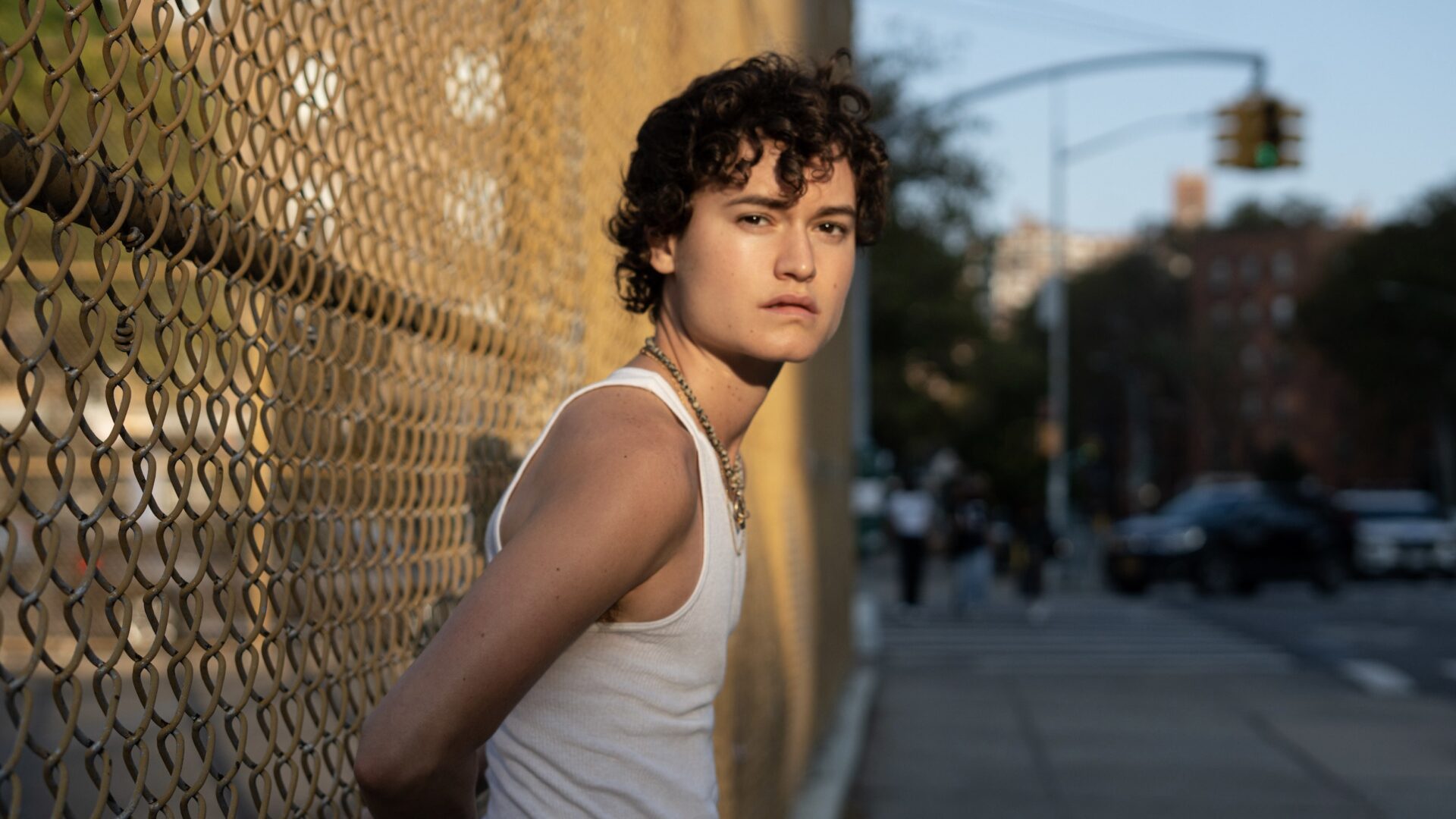
For Lío Mehiel, art is innately activism. The transmasculine Mutt actor and visual artist traverses mediums to bring an exploration of trans identity to audiences.
Mehiel made history earlier this year when they became the first trans actor to win the Special Jury Prize for Best Acting at the Sundance Film Festival for Mutt. The indie film follows a tumultuous day in the life of Feña (Mehiel). He’s a young trans man who’s cautiously reintroducing himself to family and friends.
Not only a film star, Mehiel is currently showcasing angels of a drowning world at London’s GUTS Gallery. The provocative piece, photographed by Wynne Neilly, sees Mehiel beside a bust of their chest in a toxic, man-made river.
With an upcoming screening of Mutt at Sundance Film Festival: London and their visual art on display in London, we caught up with Mehiel to discuss the importance of authentic representation of trans people, being vulnerable on screen and pursuing emboldening art.
You deliver such a grounded performance in Mutt. What drew you to the character of Feña as your debut lead role?
To be totally honest, this was the first time I ever saw a character breakdown that would allow me to honour the complexities of my identity. I’m also, like Feña and Vuk [Lungulov-Klotz] the writer-director, mixed ethnicity. I’m half Puerto Rican, half Greek. Feña is half Chilean, half Serbian. The character breakdown said “must’ve had top surgery.” It was only six months before I read this character breakdown that I’d given myself permission to get top surgery.
Also, there was a line – “sharp but tender” – and I was like “that’s me!” It was really emotional and cosmic for me because I immediately wanted it so desperately. Vuk is such a talented writer, on the page you could feel the emotionality and complexity and longing we were able to capture of someone who wants to be loved but isn’t sure the people in his life are going to receive him with love.
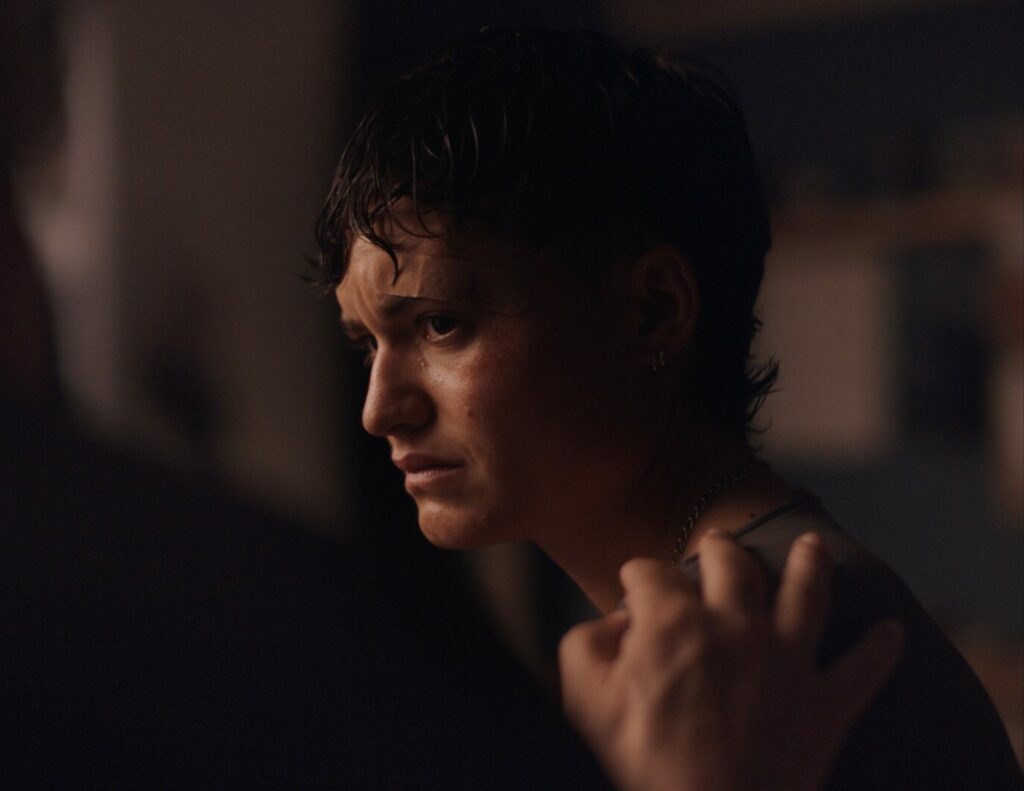
As you noted, you have similarities with trans-writer-director Vuk, but the LGBTQ+ experience is so vast. What was your collaboration like with Vuk in creating Feña as an individual?
While Feña and I share a lot of our aspects of identity, we’re very different people. Feña lived through abuse from his mother and so he moves through the world with a defensiveness I don’t have. I feel really privileged that my mum raised me to move through the world as a silly, soft and sensitive person. Feña is more prickly and aggressive.
Vuk and I worked together to figure out the meeting between me and this character. As an actor, I can put on the layers I needed to play Feña but it was to think about how authentically can I play this. Ultimately, we wanted people to walk away from the movie and feel they had a new trans friend they understood on a human level. By me playing Feña, and Vuk letting me share a little bit more of myself, Feña is a lot more likeable than he was originally written. You see it in the line Feña’s ex-boyfriend, the wonderful Cole Doman, delivers: “People don’t hate you because you’re trans, they hate you because you’re an asshole.”
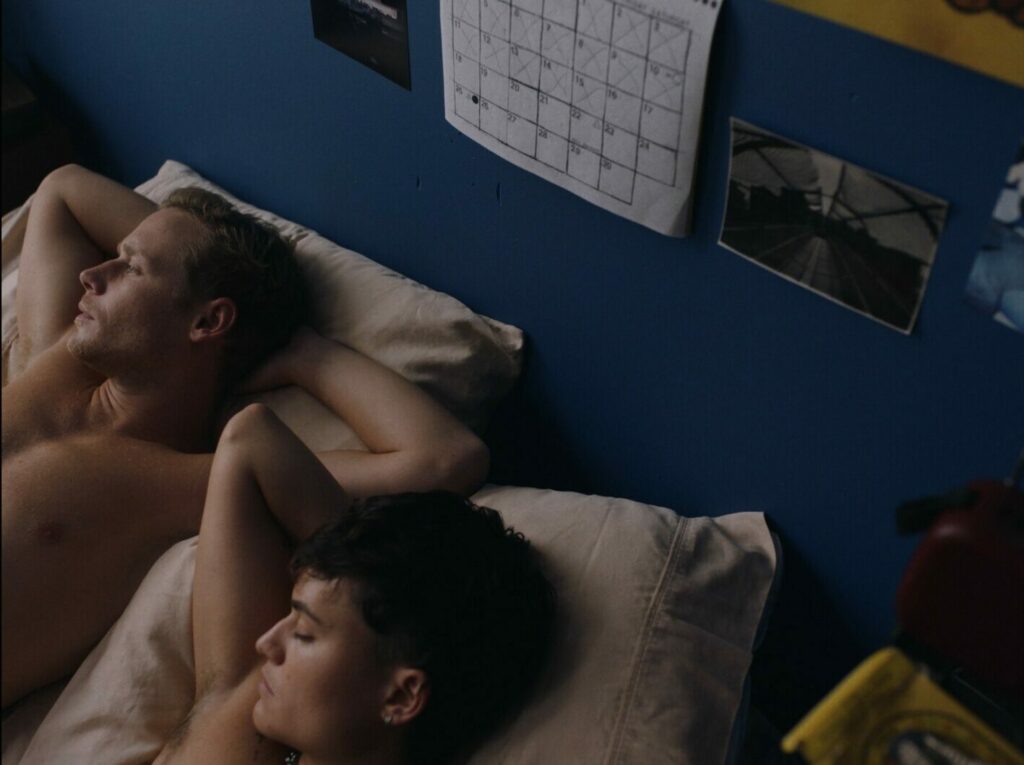
There are some very vulnerable scenes in Mutt. How did you go about approaching such soul-bearing moments?
I’m really interested in exposing myself as fully as I can for my work in pursuit of giving other people permission to investigate the layers underneath their performance of self. In a lot of my work in the visual art space too, I’ll be posing nude. I’m not afraid to share my body.
In Mutt, I’m not doing that to be like: “Look I’m doing it, this is a statement.” Instead, it’s to expose the soft fleshy imperfect body trans people have, everyone has. We’re just human beings in fleshy bodies and when we reveal that I hope it reminds people that we’re arguing about the design of our flesh. Is that really what’s important? Isn’t it so much more about the person inside the body? It’s a privilege I have to share my body in this way. I know as a person who is white, even though I’m Hispanic, a person who is masculine of centre, there’s a lot of privilege associated with that. If I can offer up my body in a way, then I’m going to do that.
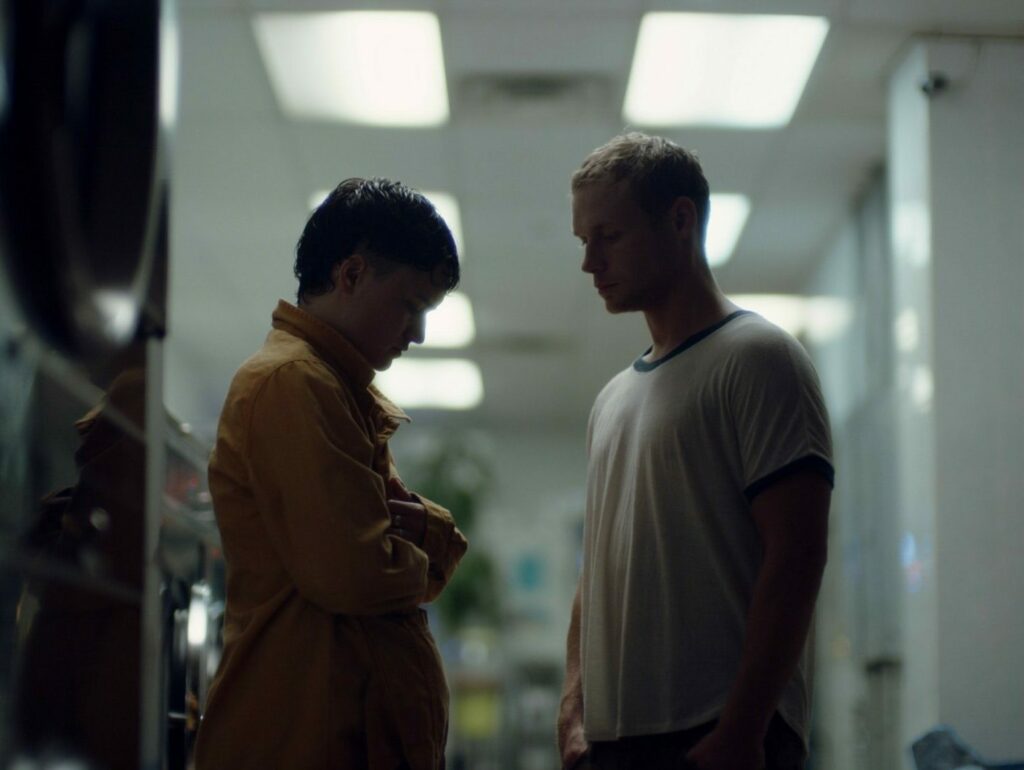
Throughout your work as an artist, you’re bringing trans identity into the foreground. Do you view your art as a form of activism?
I think all art is always political but in today’s world coming from a queer and trans perspective, how can it not be? My visual artwork is a way for me to process the scale of the catastrophe we’re living through. That’s why a lot of my work calls upon classical and religious imagery because mythology feels like the only appropriate scale to process what’s going on.
The piece on display at Guts Gallery is one image from a longer photo essay I created with photographer Wynne Neilly. My body as a trans person in these images is a red herring, as our world is drowning under a toxic lake and they have us arguing about whether or not trans people should exist. The beauty of the image alongside the toxicity of the environment provides a metaphor for what it is to live in America. The subjugated, marginalised body stripped of its autonomy is similar to the subjugated Earth which is just used for its natural resources, that’s the essay thesis. I’m not just talking about “look how beautiful it is to be trans.” Yes, and also that’s a distraction.
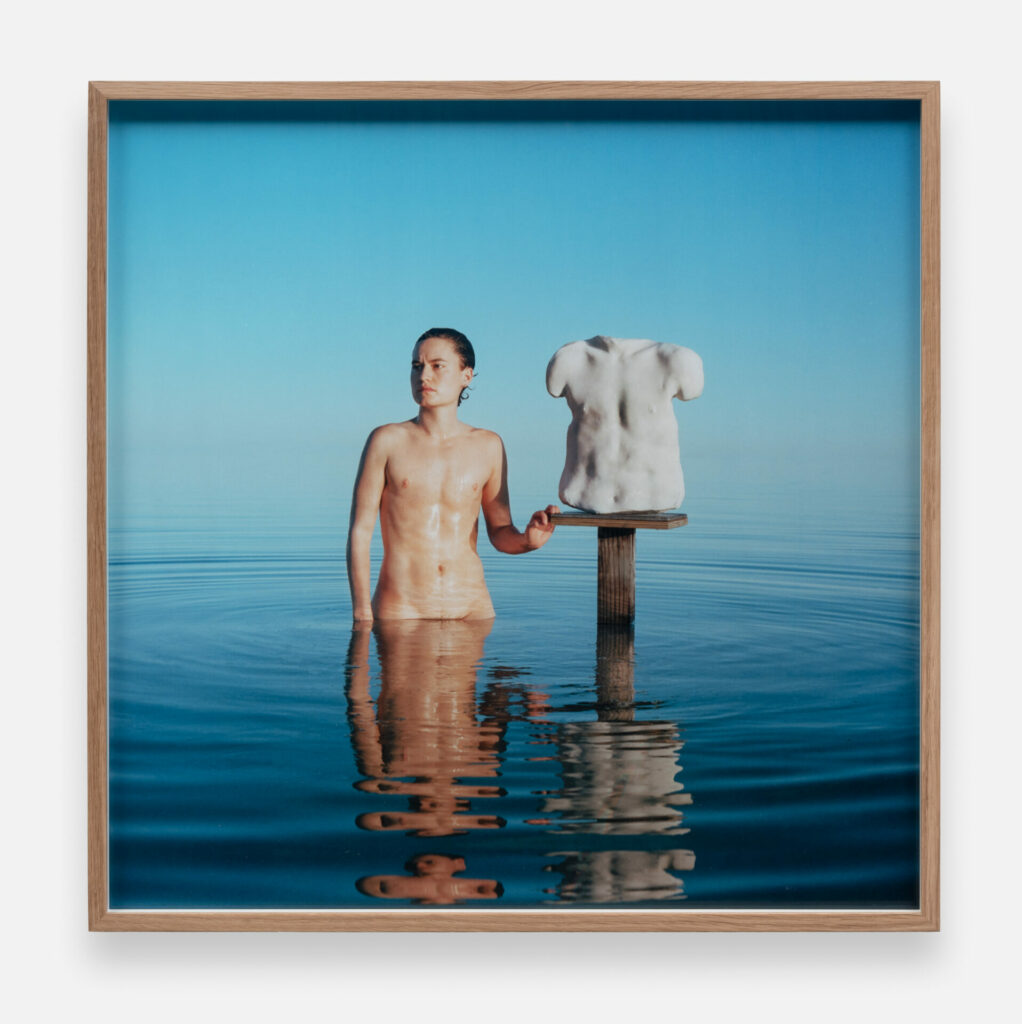
Those ideas are really striking in Angels of a drowning world, particularly the element of sculpture in the piece. What draws you to this mix of sculpture and photography?
Photographer Kobe Wagstaff reached out to me to do a photo project and he brought his friend sculptor Holly Silius to collaborate. At the time I was six months post-top surgery. We created a body cast of my chest and Holly created this stone sculpture. The experience of meeting this sculpture was so euphoric and cathartic. I’d spent so long feeling alienated from my body that to see myself as I want to be rendered in stone, permanent, tangible, was life-affirming.
I felt deeply inspired to expand beyond my sculpture and work with Holly to build a collection of 12 pieces that are all of gender nonconforming and gender expansive people to share with the world these images of trans people being treated with the reverence we deserve. Gender-expansive bodies have been left out of the archive of the human body through figurative sculpture as we know it in the Western colonial archive. I wanted to bring transness and nonnormative bodies into the art form as a way to write a love letter to all our trans ancestors who have existed but whose stories were not preserved.
Emma D’Arcy, they’re part of the project. We just sculpted them. Jari Jones, one of the most inspiring people I know, we did a lover piece of them and her partner, who’s a trans man. It’s still developing but we’re building a really beautiful collection.
GUTS Gallery London’s Saints and Sinners exhibition takes place until 7 July.
Mutt is having its UK premiere at Sundance Film Festival: London on 8 July.
